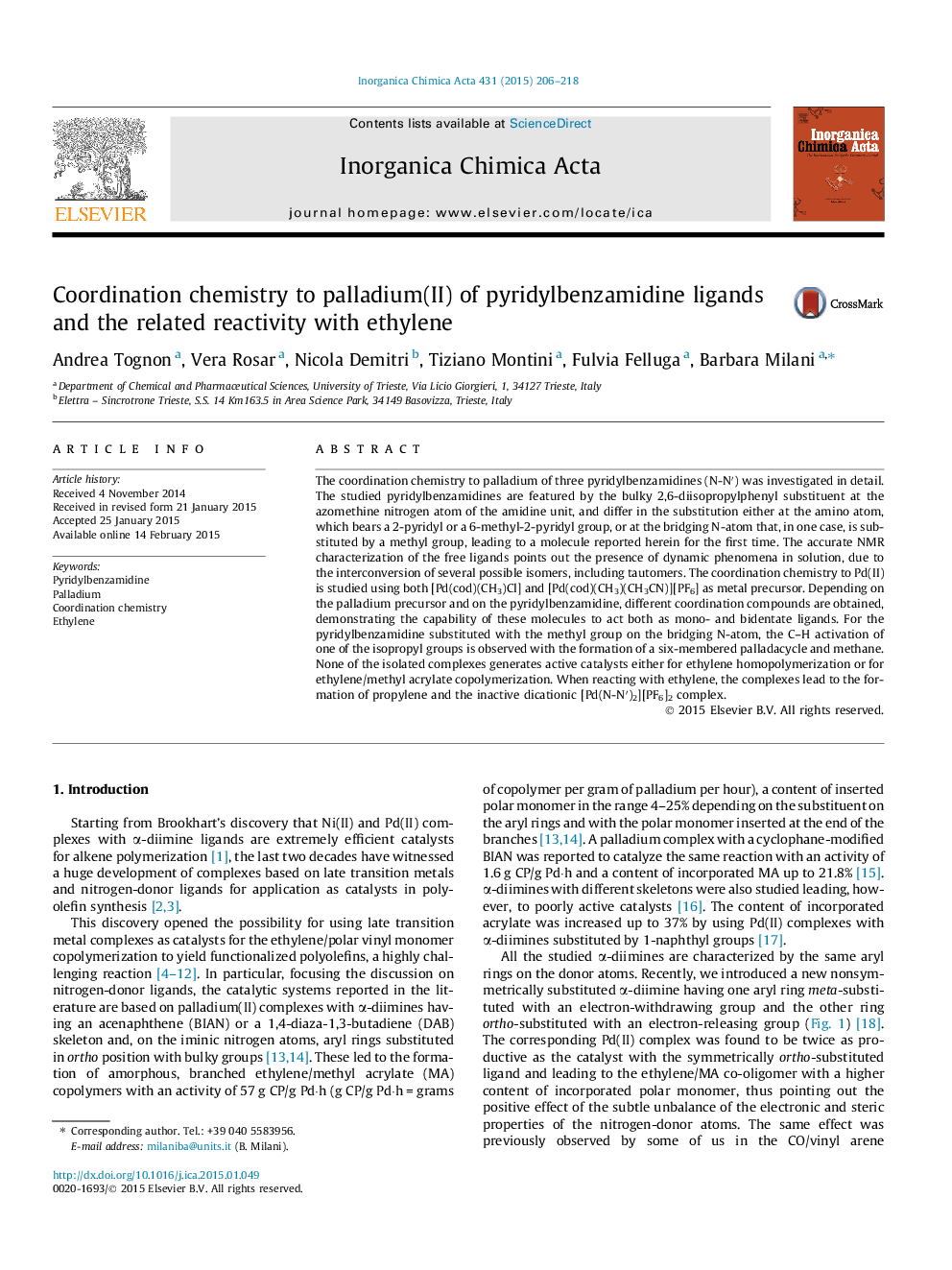| Article ID | Journal | Published Year | Pages | File Type |
|---|---|---|---|---|
| 1307943 | Inorganica Chimica Acta | 2015 | 13 Pages |
•NMR and X-ray characterization of pyridylbenzamidines points out the presence of different isomers.•Coordination chemistry to palladium(II) of pyridylbenzamidines highlights that they can act both as mono- and bi-dentate ligands.•C–H activation of one substituent on the ligand takes place.•Reactivity of palladium complexes with ethylene is reported.
The coordination chemistry to palladium of three pyridylbenzamidines (N-N′) was investigated in detail. The studied pyridylbenzamidines are featured by the bulky 2,6-diisopropylphenyl substituent at the azomethine nitrogen atom of the amidine unit, and differ in the substitution either at the amino atom, which bears a 2-pyridyl or a 6-methyl-2-pyridyl group, or at the bridging N-atom that, in one case, is substituted by a methyl group, leading to a molecule reported herein for the first time. The accurate NMR characterization of the free ligands points out the presence of dynamic phenomena in solution, due to the interconversion of several possible isomers, including tautomers. The coordination chemistry to Pd(II) is studied using both [Pd(cod)(CH3)Cl] and [Pd(cod)(CH3)(CH3CN)][PF6] as metal precursor. Depending on the palladium precursor and on the pyridylbenzamidine, different coordination compounds are obtained, demonstrating the capability of these molecules to act both as mono- and bidentate ligands. For the pyridylbenzamidine substituted with the methyl group on the bridging N-atom, the C–H activation of one of the isopropyl groups is observed with the formation of a six-membered palladacycle and methane. None of the isolated complexes generates active catalysts either for ethylene homopolymerization or for ethylene/methyl acrylate copolymerization. When reacting with ethylene, the complexes lead to the formation of propylene and the inactive dicationic [Pd(N-N′)2][PF6]2 complex.
Graphical abstractThe coordination chemistry to Pd(II) of three pyridylbenzamidines is studied, showing their capability to act as both mono- and bidentate ligands. The reactivity of the complexes with ethylene is investigated.Figure optionsDownload full-size imageDownload as PowerPoint slide
